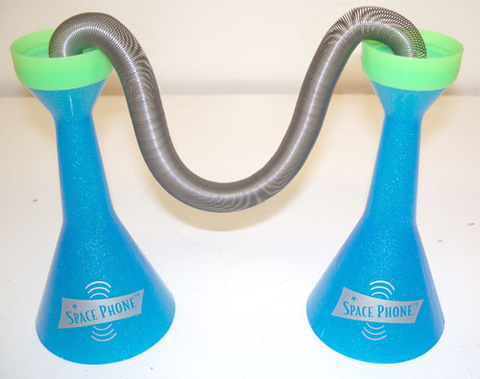Breadcrumb
3B25.67 - Culvert Whistlers

Code Number: 3B25.67
Demo Title: Culvert Whistlers
Condition: Excellent
Principle: Culvert Whistlers
Area of Study: Oscillations & Acoustics, Astronomy
Equipment:
Space Phone or Slinky.
Procedure:
See also: 3B25.67 in Astronomy and 8A70.70 in Astronomy.
The "Space Phone" allows you to hear whistlers as the speed of sound transmission through the spring is wavelength dependant. A long Slinky can also be used for this demonstration.
References:
- Regis Barille, "Frequency vs. Time Representation of a Signal With a Smartphone and a Slide Whistle", TPT, Vol. 62, #6, Sept. 2024, p. 459.
- C. L. Adler, K. Mita, and D. Phipps, "Quantitative Measurement of Acoustic Whistlers", AJP, Vol. 66, #7, July 1998, p. 607.
- Frank S. Crawford, "Pulse Compression: Dechirping of Time-Reversed Slinky Whistlers", AJP, Vol. 59, #11, Nov. 1991, p. 1050.
- Elizabeth A. Essex, "Comment on 'Culvert Whistlers Revisited' by F. S. Crawford [Am. J. Phys. 56, 752-754 (1988)]", AJP. Vol. 59, #2, Feb. 1991, p. 181.
- Frank S. Crawford, "Culvert Whistlers Revisited", AJP, Vol. 56, # 8, Aug. 1988, p. 752.
- Frank S. Crawford, "Erratum : "Slinky Whistlers", AJP, Vol. 55, # 10, Oct. 1987, p. 952
- Frank S. Crawford, "Slinky Whistlers", AJP, Vol. 55, # 2, Feb. 1987, p. 130.
- S. C. Bloch, "Introduction to Chirp Concepts with a Cheap Chirp Radar", AJP, Vol. 41, #7, July 1973, p. 857.
- Phillip M. Rinard, "Rayleigh, Echoes, Chirps, and Culverts", AJP, Vol. 40, #6, June 1972, p. 923.
- Frank S. Crawford, "Culvert Whistlers", AJP, Vol. 39, #6, June 1971, p. 610.
- "160, Slinky Sound Off!", Christopher P. Jargodzki and Franklin Potter, Mad About Physics, p. 60, 204.
- Jearl Walker, "3.77, Culvert Whistlers", The Flying Circus of Physics, p. 176
- Jearl Walker, "3.78, Slinky Whistlers", The Flying Circus of Physics, p. 176
- Ron Hipschman, "Echo Tube", Exploratorium Cookbook II, p. 114.1- 114.4